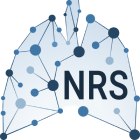A host-protein based assay to differentiate between bacterial and viral infections in preschool children (OPPORTUNITY): a double-blind, multicentre, validation study
Abstract
BACKGROUND:
A physician is frequently unable to distinguish bacterial from viral infections. ImmunoXpert is a novel assay combining three proteins: tumour necrosis factor-related apoptosis-inducing ligand (TRAIL), interferon gamma induced protein-10 (IP-10), and C-reactive protein (CRP). We aimed to externally validate the diagnostic accuracy of this assay in differentiating between bacterial and viral infections and to compare this test with commonly used biomarkers.
METHODS:
In this prospective, double-blind, international, multicentre study, we recruited children aged 2-60 months with lower respiratory tract infection or clinical presentation of fever without source at four hospitals in the Netherlands and two hospitals in Israel. A panel of three experienced paediatricians adjudicated a reference standard diagnosis for all patients (ie, bacterial or viral infection) using all available clinical and laboratory information, including a 28-day follow-up assessment. The panel was masked to the assay results. We identified majority diagnosis when two of three panel members agreed on a diagnosis and unanimous diagnosis when all three panel members agreed on the diagnosis. We calculated the diagnostic performance (ie, sensitivity, specificity, positive predictive value, and negative predictive value) of the index test in differentiating between bacterial (index test positive) and viral (index test negative) infection by comparing the test classification with the reference standard outcome.
FINDINGS:
Between Oct 16, 2013 and March 1, 2015, we recruited 777 children, of whom 577 (mean age 21 months, 56% male) were assessed. The majority of the panel diagnosed 71 cases as bacterial infections and 435 as viral infections. In another 71 patients there was an inconclusive panel diagnosis. The assay distinguished bacterial from viral infections with a sensitivity of 86·7% (95% CI 75·8-93·1), a specificity of 91·1% (87·9-93·6), a positive predictive value of 60·5% (49·9-70·1), and a negative predictive value of 97·8% (95·6-98·9). In the more clear cases with unanimous panel diagnosis (n=354), sensitivity was 87·8% (74·5-94·7), specificity 93·0% (89·6-95·3), positive predictive value 62·1% (49·2-73·4), and negative predictive value 98·3% (96·1-99·3).
INTERPRETATION:
This external validation study shows the diagnostic value of a three-host protein-based assay to differentiate between bacterial and viral infections in children with lower respiratory tract infection or fever without source. This diagnostic based on CRP, TRAIL, and IP-10 has the potential to reduce antibiotic misuse in young children.
FUNDING:
MeMed Diagnostics.

